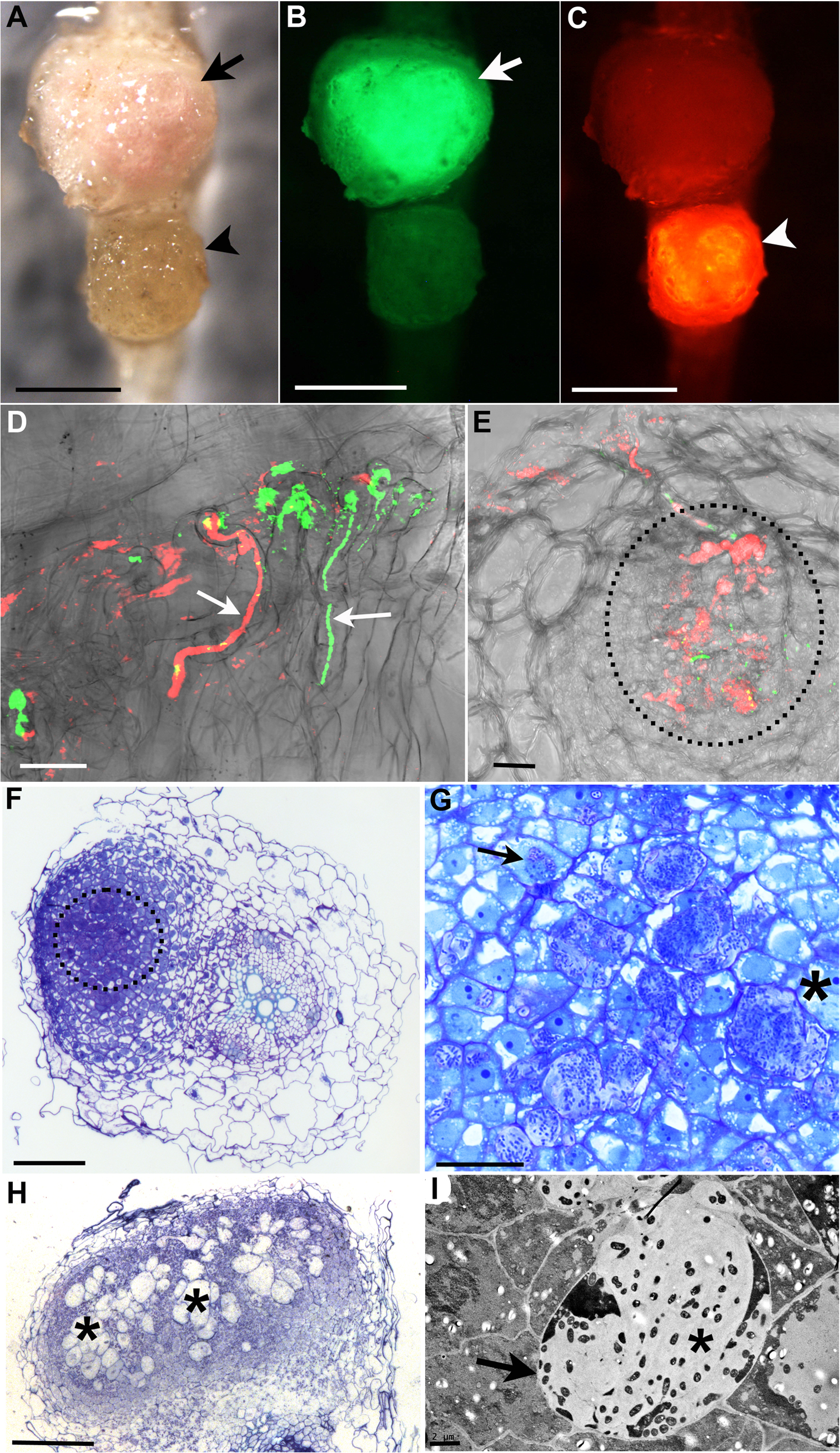Legumes control infection of nodules by both symbiotic and endophytic bacteria
New research results show that legume plants selectively regulate access and accommodation of both symbiotic and endophytic bacteria inside root nodule. This provides a solid basis and platform for identification and selection of beneficial endophytic bacteria and highly efficient nitrogen-fixing rhizobia to be used as biofertilisers in sustainable agriculture. Furthermore, these results contribute to the general understanding of the control mechanisms used by eukaryotic organisms to control microbial infection.

Plants have developed mechanisms to fight pathogenic bacterial infection, but in the beneficial symbiotic association, entry of the nitrogen-fixing bacteria is accepted. The legume-symbiotic rhizobia interaction is a well-studied example of a very selective and clearly defined host/non-host plant-microbe association. Even though the final outcome of this tightly controlled interaction is the bacterial fixation of atmospheric nitrogen in exchange for plant-produced carbohydrates, the host selects its symbiont on the basis of bacterial features that are not correlated with their capacity to fix nitrogen. Furthermore, inventories of bacterial species retrieved from nodules of legumes growing in a variety of environmental conditions and soils revealed a bacterial community composed of both symbionts and endophytes. The presence of poor symbionts or even nonsymbionts within nodules of economically important legumes may thus negatively affect the efficiency of their symbiotic nitrogen fixation, and hence plant growth. However, to date there has been no evaluation of the role of endophytic bacteria in pioneer legumes grown in poor soils where fully compatible, highly efficient nitrogen fixing symbionts are either low in titre, or which might need to evolve into more effective symbionts.
For the symbionts, a complex genetic mechanism that allows mutual recognition and plant infection has emerged from genetic studies under axenic conditions. In contrast, little is known about the mechanisms controlling the endophytic infection, and this is what the Aarhus research team wanted to study. They investigated the contribution of both the host and the symbiotic microbe to endophyte infection and development of mixed colonised nodules in Lotus japonicus.
The researchers demonstrated that when legume plants are exposed to mixed bacterial communities, they selectively regulate access and accommodation of bacteria occupying this specialised environmental niche, the root nodule.
Maintaining populations of highly competitive symbionts in the soil, and ensuring predominant occupancy by effective nitrogen fixing bacteria, represent a major challenge that limits legume cultivation. Their study shows that genetic resources available for the model legumes, in combination with co-inoculation strategies, provide a reliable framework for identifying the genetic mechanisms operating behind this compatibility at the plant root interface, thus allowing developments to further address this challenge in a targetted manner.
These results can be used in future studies to select beneficial microbes with enhanced colonisation and maintenance ability inside plant hosts, and it provides a solid basis and platform for identification and selection of beneficial endophytic bacteria and highly efficient nitrogen-fixing rhizobia to be used as biofertilisers in sustainable agriculture.
Background information
Plants develop their root systems in a microbe-rich soil environment (more than 109 bacteria per gram soil) and have sophisticated mechanisms for microbial surveillance. In addition to the selection pressure imposed from the plant host, differences in the physiology of microbes and their ability to establish various microbe-microbe interactions, contribute to the composition of microbial communities in the soil, rhizosphere and in planta. Elaborated mechanisms to monitor microbial presence and to control their infection have evolved in plants, therefore only particular microbes so called “endophytes” are able to colonise the internal tissues with minimal or no host damage.
The legume root nodule is a unique postembryonic organ induced by symbiotic nitrogen-fixing bacteria, but which hosts multiple species, symbiotic and endophytic . Genetic studies of the binary interaction legume-symbiont led to the discovery of key components evolved in the mutual legume-symbiont recognition leading to nodule infection. In contrast, there is limited knowledge about the endophytic nodule infection, the role of the legume host, or the symbiont, in the process of nodule colonisation by endophytes.
The Aarhus researchers’ focused on the early stages of nodule infection in order to identify which molecular signatures and genetic components favour/allow endophyte accommodation, and multiple species co-existence inside nodules. The research team used co-inoculation experiments with a panel of endophytic bacteria together with the efficient symbiont and showed that complex host-microbe and microbe-microbe interactions can be captured and studied in Lotus plants grown under controlled conditions. Their results showed that legume nodule is a unique environmental niche with an adapted program for accommodation of host-selected compatible soil microbes, and identified several layers of compatibility that determine the access and colonisation efficiencies of symbiotic and endophytic bacteria.
The article was published in the international journal Plos Genetics: A Legume Genetic Framework Controls Infection of Nodules by Symbiotic and Endophytic Bacteria
Rafal Zgadzaj, Euan K. James, Simon Kelly, Yasuyuki Kawaharada, Nadieh de Jonge, Dorthe B. Jensen, Lene H. Madsen, Simona Radutoiu
http://journals.plos.org/plosgenetics/article?id=10.1371/journal.pgen.1005280
Further information
Associate Professor Simona Radutoiu
Department of Molecular Biology and Genetics
Aarhus University, Denmark
radutoiu@mbg.au.dk - +45 87155498
